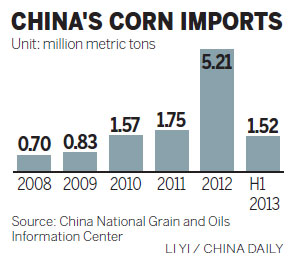USA

Kickstarter Bans GMO Rewards For Crowdfunded Projects, Cheering Some Activists And Dismaying Some Synthetic Biologists

The very public debate over GMOs has flared up in the news, state and federal legislatures and now … online crowdfunding platforms?
Kickstarter, which has launched everything from space telescopes and iPhone accessories to comic books and independent films, made waves on July 31 when the company updated its rules to specify that project creators cannot offer genetically modified organisms as rewards to backers. Restricting rewards isn't without precedent. Some of the stuff creators couldn't send out to backers of their projects aren't all that surprising, like alcohol, tobacco and weapons. But project creators also cannot send sunglasses, nutritional supplements and bath or cosmetic products, just to name a few.
The GMO rule change came in the wake of one of the first major successful GMO projects on Kickstarter:Glowing Plant. The project is the brainchild of three young men who are developing glowing Arabidopsis thaliana (thale cress) plants and glowing roses by inserting a gene for bioluminescence that is originally derived from fireflies. Anyone that gave more than $40 to the project gets glowing plant seeds or a seedling of their own.
Normally, Glowing Plant’s genetic manipulation would be expected to draw attention from the U.S. Department of Agriculture. But because the glowing plants are made with a particular engineering method -- a “gene gun” that smashes plants with a small metal particle coated with DNA, rather than the alternative path of infecting the plants with a plant pest that contains the gene to be added -- Glowing Plant’s creators say the seeds and plants can be distributed without further scrutiny from the USDA.
Some say the gene gun justification is a loophole in the regulatory scheme. Similar cases have been upheld before -- in 2011, for example, the USDA ruled that Scotts Miracle-Gro’s GM Roundup-resistant bluegrass was not subject to regulation because the company inserted the herbicide resistance trait with a gene gun. But Glowing Plant team member Antony Evans says the project is conducting its own safety tests on the plants, modeled after the USDA’s standards.
By the end of its campaign in early June, Glowing Plant smashed its funding goal, raising just over $484,000 when it had initially sought only $65,000. But the project also provoked fierce opposition from anti-GMO activists, who worried that Glowing Plant seeds would find their way into the wild and disrupt ecosystems, and who were especially unsettled by the fact that the GMOs would not be examined by the USDA before being distributed. In late May, while Glowing Plant was still raising funds, an environmental organization called ETC Group started up a petition on Avaaz.org (currently standing at around 14,000 signatures) asking Kickstarter to add bioengineered lifeforms to their prohibited list. ETC Group also launched its own “Kickstopper” fundraiser on IndieGogo, aiming to raise funds to combat Glowing Plant and to create a comic book about their campaign.
When Kickstarter eventually made the call to ban GMO rewards, it didn’t affect Glowing Plant -- the money was already theirs. But the team, which envisioned their luminescent leaves as standard-bearers for future DIY synthetic biology projects on Kickstarter, was nonetheless perturbed. Evans said that since Glowing Plant was selected by Kickstarter editors as a “project of the day” and highlighted on the front page of the website, it was a bit of a surprise when word of the rule change got to them.
“We’ve written to them and asked them about it, and they have not responded,” Evans said.
Evans pointed out that Kickstarter has written extensively about previous rule changes, like a recent ban on self-help guides that was enacted this year. That rule change was prompted by backlash over a “seduction guide” that some critics called a how-to guide to rape. After initially taking a stance against canceling the project, Kickstarter wrote an apologetic blog post in June reversing course and explaining the ban on pickup guides and similar material.
The rollout of the GMO reward ban has been accompanied by much less fanfare. Kickstarter told The Verge last week that they aim “to be as open as possible while protecting the health and creative spirit of Kickstarter for the long term.”
“It’s notable that they use the word ‘health’ in their response,” David Holmes wrote on PandoDaily. “One of the big points made by anti-GMO activists is that they’re not safe to eat. However, there is no substantial peer-reviewed scientific evidence to suggest that any GM foods on the market today are harmful to humans.”
A Kickstarter representative told the International Business Times that in that particular statement, the word “health” was specifically meant to refer to the health of the Kickstarter community, and not as a wink and a nod to anti-GMO activists.
On Wednesday, The Verge published further responses from Kickstarter cofounder and communications head Yancey Strickler. Strickler confirmed that the rule change stemmed from the Glowing Plant project, but said it wasn’t a reflection on that individual venture or the creators, or a judgment on the field of synthetic biology as a whole.
“The Glowing Plants project sparked a debate in the scientific community about Kickstarter being used to release genetically modified organisms to the public. … To better understand the debate, we reached out to a few scientists, researchers and others in the biohacking world for their perspective,” Strickler told The Verge. “What emerged is that the scientific community is unsettled on the best practices and ethics of releasing genetically modified organisms into the world.”
The company may also be trying to avoid a legal tangle with the rule change. While people can only create Kickstarter projects in the U.S., U.K. and Canada, backers can contribute from anywhere, including European Union countries that place strict rules on importing GMOs.
Plus, Kickstarter has never been quite comfortable with housing projects that cross too deeply into experimental science -- Strickler told The Verge as much, saying some science projects are “outside of [Kickstarter’s] core focus.” While Kickstarter does make space for science-themed creative and technological works, straight-up research projects would not be allowed under its guidelines; for that, scientists are increasingly turning to other science-focused crowdfunding startups like Microryza and Petridish.org.
“We do allow [GMO projects] -- we encourage them,” Microryza cofounder Cindy Wu said in a phone interview. “Of course, it’s different for us because we don’t provide any sort of awards, so distribution of GMOs isn’t an issue for us.”
Meanwhile, Glowing Plant is on target to start shipping out its luminescent Arabidopsis seeds and seedlings by the summer of 2014. Evans says that before the ban was enacted, the Glowing Plant team had toyed with the idea of doing a similar Kickstarter project every year. Now, they’ll probably still pursue crowdfunding, but on a different platform like Indiegogo.
“We personally believe that this technology has a lot of power to do good in the world,” Evans says. And crowdfunding “makes it possible for all groups to participate in this revolution.” INTERNATIONAL BUSINESS TIMES





